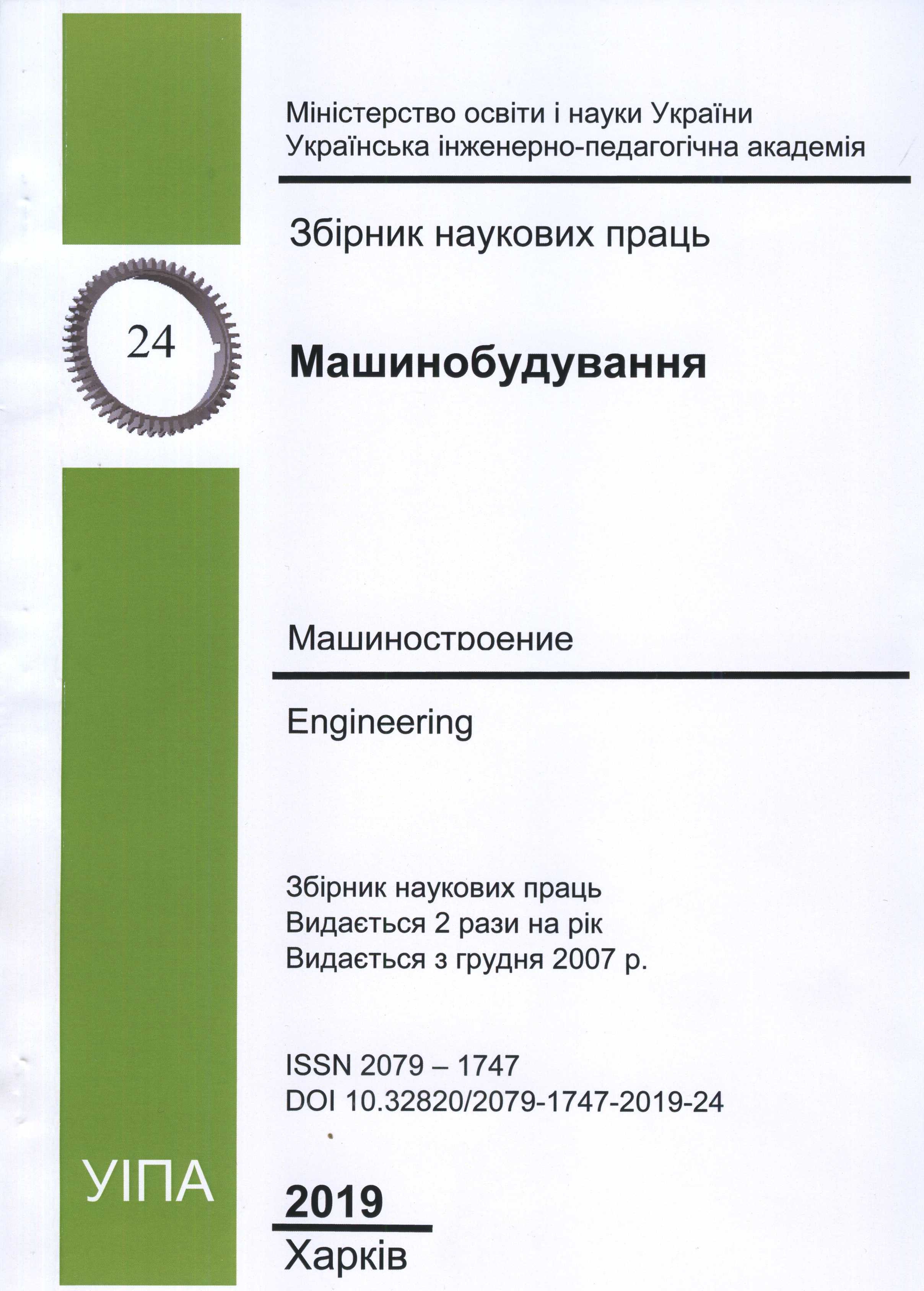Contact pressures in connections with guaranteed interference fit
Abstract
DOI: https://doi.org/10.32820/2079-1747-2019-24-108-114
In modern mechanical engineering, compound with a guaranteed preload are widely used, which do not require additional parts for their reliable connection. The selection of the required fit is made based on the calculation of the required contact pressures in conjunction. In this case, on the one hand, contact pressure should provide the required shear and rotation strength of the joint, and on the other hand, it should not exceed the yield strengths of the materials of the parts to be joined.
The main parameter ensuring the strength of the pair in shear and torsion is the magnitude of the contact pressure. The minimum required contact pressure in conjugation is determined from the condition that the frictional force exceeds the shear and cranking forces. The maximum allowable specific contact pressure in the joint, at which there is no plastic deformation on the contact surfaces of the parts to be joined, is determined by the theory of maximum shear stresses
Contact pressure at a known preload value is usually determined by solving the Lame problem and taken constant over the entire length of the interface.
In the vast majority of cases, the shaft is longer than the sleeve. Moreover, the distribution of contact pressure along the length of the connection is more complex, depending on the linear dimensions of the mating parts, their shape, surface roughness, assembly method and a number of other factors that the Lame formula does not take into account. The deformation of that part of the shaft on which the sleeve is fitted is uneven along the mating length. The protruding parts of the shaft that extend beyond the edges of the sleeve prevent the radial movement of adjacent sections, which leads to a concentration of stresses at the edges of the enclosing part. Thus, the true pressure distribution along the length of the joint remains undetected.
The article poses and solves the problem of experimentally determining the actual contact pressures in compound with a guaranteed preload and comparing them with the values calculated by the generally accepted methodology.
As a result of the studies, the actual contact pressures in compound with a guaranteed preload were found and correction factors are given depending on the method of assembly of the connected parts.
Downloads
References
Andreev, GJa & Shatko, II 1962, ‘Jeksperimentalnyj metod opredelenija kontaktnyh naprjazhenij v cilindricheskih detaljah soprjazhennyh s natjagom’, Trudy Harkovskogo gornogo instituta, vol. 11 Raboty aspirantov, pp. 81-87.
Andreev, GJa 1968, Teplovaja sborka v mashinostroenii, Tehnika, Kiev.
Andreev, GJa & Malickij, IF 1968, ‘Prochnost teplovyh soedinenij s antikorrozionnoj plenkoj’, Tehnika, no. 14, pp. 12.
Malickij, IF & Chernjatina, EV 2014, ‘Vlijanie sherehovatosti i sposobov obrabotki na prochnost soprjazhenija s natjagom’, Mashynobuduvannia, Ukrainska inzhenerno-pedahohichna akademiia, Kharkiv, no. 13, pp. 149-153.
Smirnov, IP 2009, Razvitie tehnologii remonta podemno-transportnogo oborudovanija, Mashynobuduvannia, Ukrainska inzhenerno-pedahohichna akademiia, Kharkiv, no. 4, pp. 170-177.
Smirnov, IP & Malickij IF 2016, ‘Optimalnyj razmer diametra soedinenij s natjagom’, Mashynobuduvannia, Ukrainska inzhenerno-pedahohichna akademiia, Kharkiv, no. 18, pp. 139-144.
Andreev, GJa 1965, Teplovaja sborka kolesnyh par, Izdatelstvo Harkovskogo gosudarstvennogo universiteta, Harkov.
Tkachuk, ZG, Malickij, IF, Alehin, AA & Ostrenko, BC 1975, ‘Opredelenie kontaktnyh davlenij v soedinenii poloj osi so stupicej kolesa’, in Tkachuk, ZG, Detali i uzly mashin, Tehnika, Kiev, pp. 54-59.


